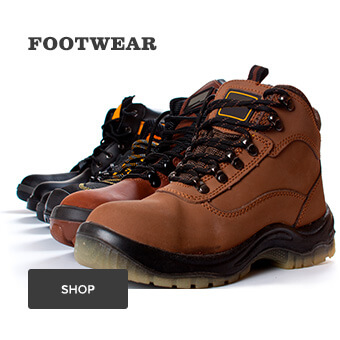FAQ
Plantar Fasciitis – The plantar fascia is a broad band of fibrous tissue which runs along the bottom surface of the foot, attaching at the bottom of the heel bone and extending to the forefoot. When the plantar fascia is excessively stretched, this can cause plantar fasciitis, which can also lead to heel pain, arch pain, and heel spurs. Plantar Fasciitis is a common, painful foot condition. It can be caused by over-pronation which results in the arch collapsing upon weight bearing, a sudden increase in physical activity, excessive weight on the foot, usually attributed to obesity or pregnancy, a foot with an unusually high arch and improperly fitting footwear. With Plantar Fasciitis, the bottom of your foot usually hurts near the inside of the foot where the heel and arch meet. The pain is often acute either first thing in the morning or after a long rest, because while resting the plantar fascia contracts back to its original shape. As the day progresses and the plantar fascia continues to be stretched, the pain often subsides. Feel free to visit our blog for treatment ideas. For more information contact our certified pedorthist.
(For shoes that would help in the treatment of plantar fasciitis click here )
Achilles Tendonitis - Achilles tendonitis causes inflammation and degeneration of the Achilles tendon. The Achilles tendon is the large tendon located in the back of the leg that inserts into the heel. The pain can be a shooting pain, burning pain, or even an extremely piercing pain. Achilles tendonitis should not be left untreated due to the danger that the tendon can become weak and ruptured. Achilles Tendonitis is aggravated by activities that repeatedly stress the tendon, causing inflammation. Individuals who suffer from achilles tendonitis often complain that their first steps out of bed in the morning are extremely painful. Another common complaint is pain after steps are taken after long periods of sitting. This pain often lessens with activity. There are several factors that can cause achilles tendonitis. The most common cause is over-pronation. Over-pronation occurs in the walking process, when the arch collapses upon weight bearing, adding stress on the achilles tendon. Other factors that lead to achilles tendonitis are improper shoe selection, inadequate stretching prior to engaging in athletics, a short achilles tendon, direct trauma (injury) to the tendon, and heel bone deformity. For more information contact our certified pedorthist.
(For shoes that would help in the treatment of achilles tendonitis click here)
Morton's Neuroma - Morton's Neuroma is a common foot problem associated with pain, swelling and/or an inflammation of a nerve, usually at the ball-of-the-foot between the 3rd and 4th toes. Symptoms of this condition include sharp pain, burning, and even a lack of feeling in the affected area. Morton's Neuroma may also cause numbness, tingling, or cramping in the forefoot. Morton's Neuroma is a foot condition caused from an abnormal function of the foot that leads to bones squeezing a nerve usually between the 3rd and 4th metatarsal heads. Symptoms of Morton's Neuroma often occur during or after you have been placing significant pressure on the forefoot area, while walking, standing, jumping, or sprinting. Footwear with pointed toes and/or high heels can often lead to a neuroma. Constricting shoes can pinch the nerve between the toes, causing discomfort and extreme pain. For more information contact our certified pedorthist.
(For shoes that would help in the treatment of Morton's Neuroma click here)
Metatarsalgia - This is a common foot disorder that can affect the bones and joints at the ball-of-the-foot. Metatarsalgia (ball-of-foot-pain) is often located under the 2nd, 3rd, and 4th metatarsal heads, or more isolated at the first metatarsal head (near the big toe). With this common foot condition, one or more of the metatarsal heads become painful and/or inflamed, usually due to excessive pressure over a long period of time. It is common to experience acute, recurrent, or chronic pain with metatarsalgia. Footwear with a narrow toe box (toe area) forces the ball-of-foot area to be forced into a minimal amount of space. Also as we get older, the fat pad in our foot tends to thin out, making us much more susceptible to pain in the ball-of-the-foot. For more information contact our certified pedorthist.
(For shoes that would help in the treatment of metatarsalgia click here)
Arch Pain - The term arch pain (often referred to as arch strain) refers to an inflammation and/or burning sensation at the arch of the foot. Most frequently the cause is a common condition called plantar fasciitis. (For more information about plantar fasciitis see above definition) If this condition is left untreated and strain on the longitudinal arch continues, a bony protrusion may develop, known as a heel spur. It is important to treat the condition promptly before it worsens. For more information contact our certified pedorthist.
(For shoes that would help in the treatment of arch pain click here)
Bone Spurs - A bone spur is a tiny pointed outgrowth of bone. Bone spurs are usually caused by local inflammation, such as from degenerative arthritis or tendonitis. This inflammation stimulates the cells that form bone to deposit bone in this area, eventually leading to a bony prominence or spur. Inflammation of the Achilles tendon can lead to the formation of a bone spur at the back of the heel bone. A heel spur develops as an abnormal growth of the heel bone. Calcium deposits form when the plantar fascia pulls away from the heel area, causing a bony protrusion, or heel spur to develop. For more information contact our certified pedorthist.
(For shoes that would help in the treatment of plantar fasciitis click here)
Bunions - A bunion is a prominent bump on the inside of the foot around the big toe joint. This bump is actually a bone protruding towards the inside of the foot. With the continued movement of the big toe towards the smaller toes, it is common to find the big toe resting under or over the second toe. This causes a common forefoot condition called overlapping toes. Some of the symptoms of bunions include inflammation, swelling, and soreness on the side surface of the big toe. The discomfort commonly causes a patient to walk improperly. Another type of bunion which some individuals experience is called a Tailor's Bunion, also known as a Bunionette. This forms on the outside of the foot towards the joint at the little toe. It is a smaller bump that forms due to the little toe moving inwards, towards the big toe. The deformity can develop from an abnormality in foot function, or arthritis, but is more commonly caused by wearing improper fitting footwear. For more information contact our certified pedorthist.
(For shoes that would help in the treatment of bunions click here)
Corns - Corns like calluses develop from an accumulation of dead skin cells on the foot, forming thick, hardened areas. They contain a cone-shaped core with a point that can press on a nerve below, causing pain. Corns are a very common ailment that usually form on the tops, sides and tips of the toes. Corns can become inflamed due to constant friction and pressure from footwear. Corns that form between the toes are sometimes referred to as soft corns. Some of the common causes of corn development are tight fitting footwear, high heeled footwear, tight fitting stockings and socks, deformed toes, or the foot sliding forward in a shoe that fits too loosely. Soft corns result from bony prominences and are located between the toes. They become soft due to perspiration in the forefoot area. Complications that can arise from corns include bursitis and the development of an ulcer. For more information contact our certified pedorthist.
(For shoes that would help in the treatment of corns click here)
Hammer Toes - A hammer toe is a toe that is contracted at the PIP joint (middle joint in the toe), potentially leading to severe pressure and pain. Ligaments and tendons that have tightened cause the toe's joints to curl downwards. Hammer toes may occur in any toe except the big toe. There is often discomfort at the top part of the toe due to rubbing against the shoe. Hammer toes are classified based on the mobility of the toe joints. There are two types - flexible and rigid. In a flexible hammer toe, the joint has the ability to move. This type of hammer toe can be straightened manually. A rigid hammer toe does not have that same ability to move. Movement is very limited and can be extremely painful. This sometimes causes foot movement to become restricted leading to extra stress at the ball-of-the-foot, and possibly causing pain and the development of corns and calluses. Hammer toes result from a muscle imbalance which causes the ligaments and tendons to become unnaturally tight. This results in the joint curling downward. Arthritis can also lead to many different forefoot deformities, including hammer toes. For more information contact our certified pedorthist.
(For shoes that would help in the treatment of hammer toes click here)
Gout - Gout is a kind of arthritis that occurs when uric acid builds up in blood and causes joint inflammation. Gout is a complex form of arthritis characterized by sudden, severe attacks of pain, redness and tenderness in joints, often the joint at the base of the big toe but can also attack ankles, heels, knees, wrists, fingers and elbows. Gout can affect anyone. Men are more likely to get gout, but women become increasingly susceptible to gout after menopause. An acute attack of gout can wake you up in the middle of the night feeling like your big toe is on fire. The affected joint is hot, swollen and so tender that even the weight of the sheet on it seems intolerable. This happens if your body produces extra acid or does not eliminate enough, or if you eat too many foods with purines, such as liver and dried beans. For more information contact our certified pedorthist.
(For shoes that would help in the treatment of gout click here)
Diabetes - Diabetes is a serious disease that can develop from lack of insulin production in the body or due to the inability of the body's insulin to perform its normal everyday functions. Insulin is a substance produced by the pancreas gland that helps process the food we eat and turn it into energy. Diabetes affects approximately 16 million Americans and is classified into 2 different types: Type 1 and Type 2. Type 1 is usually associated with juvenile diabetes and is often linked to heredity. Type 2, commonly referred to as adult onset diabetes, is characterized by elevated blood sugars, often in people who are overweight or have not attended to their diet properly. Many complications can be associated with diabetes. Diabetes disrupts the vascular system, affecting many areas of the body such as the eyes, kidneys, legs, and feet. People with diabetes should pay special attention to their feet. Diabetic foot conditions develop from a combination of causes including poor circulation and neuropathy. Diabetic Neuropathy can cause insensitivity or a loss of ability to feel pain, heat, and cold. Diabetics suffering from neuropathy can develop minor cuts, scrapes, blisters, or pressure sores that they may not be aware of due to the insensitivity. If these minor injuries are left untreated, complications may result and lead to ulceration and possibly even amputation. For more information contact our certified pedorthist.
(For shoes that would help in the treatment of diabetes click here)






